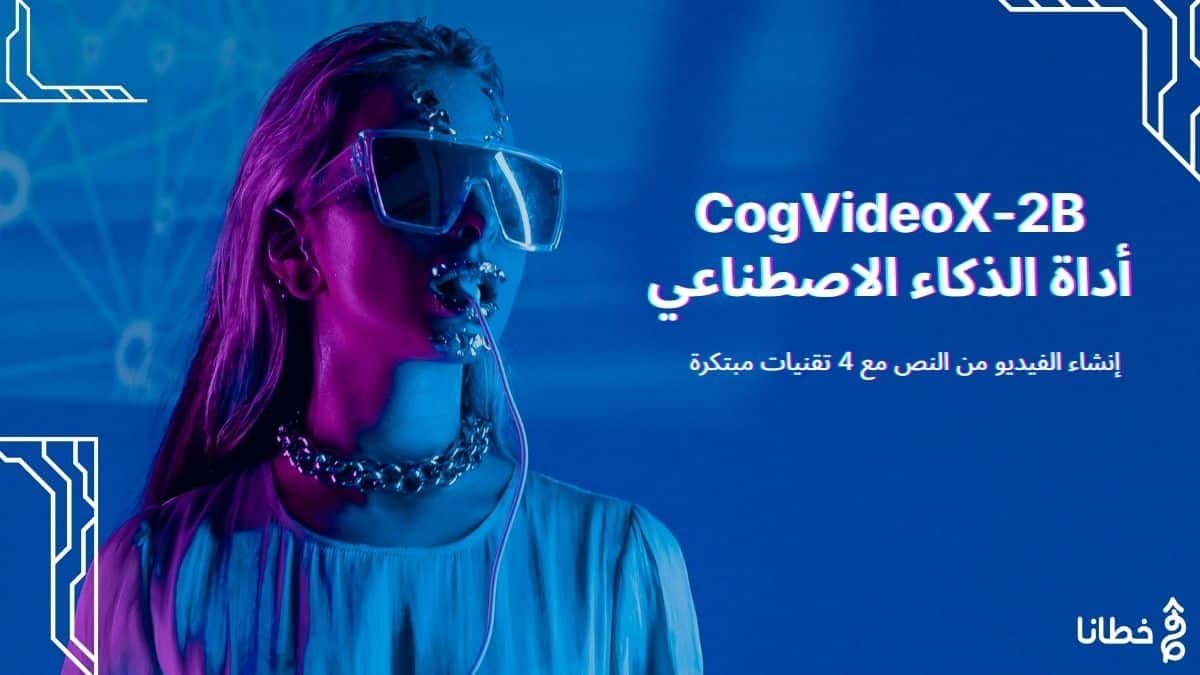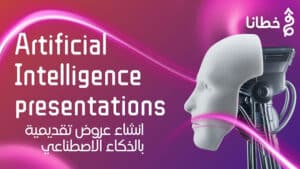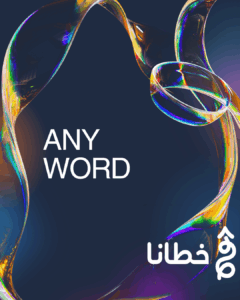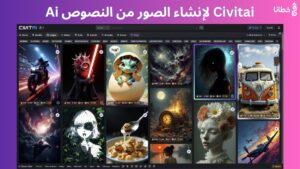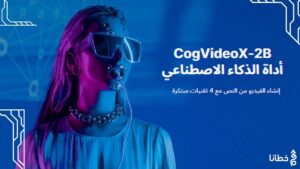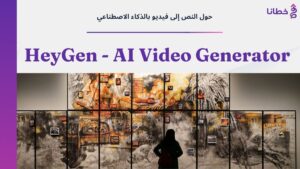table of contents
Creating AI videos is no longer as difficult as we thought, as this amazing tool will provide you with a combination of realism and imagination to take you to a world full of creativity and passion in creating unique video content through the CogVideoX-2B tool, as there is no door to your imagination and what this tool provides you with in terms of high capabilities in creating videos with artificial intelligence easily and simply in a few minutes; so let’s get to know it and don’t forget if you have any questions, leave them in the comments and share the article because we put a lot of effort to provide you with the latest artificial intelligence tools.
What does artificial intelligence (AI) mean?
Artificial intelligence (AI) is the intelligence exhibited by computer systems. It is a field of research in computer science that develops and studies methods and programs that enable machines to perceive their environment and use learning and intelligence to take actions that maximize their chances of achieving specific goals.
What is the CogVideoX-2B?
CogVideoX-2B helps you create high-resolution videos from the text you write. Put, you write a text, and it generates an AI-generated video that expresses your text. You describe the format of the desired video, and the AI generates a video approximately 6 seconds long. Based on CogVideo, this is a great feature, as you can leverage this video in all digital marketing channels, enhancing your digital presence in a wonderful, fast, and unique way. Every video generated by CogVideoX-2B is unique.
CogVideoX-2B, the AI-powered text-to-video generator, is 100% open source, meaning it can be developed over time by any programmer. You can view its source code and modify and develop it as you see fit. This indicates that the tool is capable of evolving in the future, whether in the quality, duration, or type of videos it provides, in addition to the possibility of providing many unique features in the future. Therefore, make sure to add CogVideoX-2B, a text-to-video generator, to your valuable collection of digital marketing technology.
CogVideoX-2B is the latest open-source video generation model from ZhiPu AI, renowned for its powerful video generation capabilities. Simply by entering text, users can effortlessly generate high-quality video content. CogVideoX-2B is the first model in the CogVideoX series, featuring 2 billion parameters and sharing the same lineage as ZhiPu AI’s AI video generation product, “Qingying.”
What technologies are used in the CogVideoX-2B?
CogVideoX-2B incorporates several advanced technologies, making it a leader in the field of video generation, as it provides:
3D Variable Autoencoder (3D VAE): Using an innovative 3D convolution approach, 3D VAE compresses video data across spatial and temporal dimensions, achieving unprecedented compression rates and superior reconstruction quality. The model structure includes an encoder, decoder, and latent space regularizer, ensuring coherent and logical information processing through causal convolution mechanisms.
End-to-end video comprehension model: This improvement improves the model’s understanding of text and adherence to instructions, ensuring that generated videos meet user requirements, even with long and complex prompts.
Professional transcoding technology: This technology allows for deep analysis of encrypted video data and the integration of text inputs to create high-quality, narrative-rich video content that feels like you’re telling a story.
The CogVideoX model supports prompts in English: It can generate 6-second videos at 8 frames per second and 720*480 resolution. So far, using the distributors for inference consumes 36GB of memory, while using SAT consumes 18 GB. Additionally, the exact memory consumption is 42GB, and the maximum length of prompts is 226 characters.
Why use CogVideoX-2B Text to Video Generator?
1- High-quality data enhances performance:
ZhiPu AI invested significant resources into developing an efficient method for filtering high-quality video data to train CogVideoX-2 B. This method effectively excludes low-quality videos containing excessive editing or jerky motion, ensuring high standards and data purity. Additionally, the team innovatively built a pipeline for generating video subtitles from image captions, addressing the common problem of insufficient, detailed textual descriptions in video data and providing richer, multidimensional information sources for model training.
2- Performance evaluation and future prospects:
CogVideoX-2B excels in several key performance metrics, particularly in human motion capture, scene restoration, and dynamic content. These achievements have received widespread industry acclaim. ZhiPu AI also introduced evaluation tools focused on dynamic video features, further improving the model’s evaluation dimensions.
How to Use CogVideoX-2B AI Video Generator
Step 1: Click on the link https://huggingface.co/spaces/THUDM/CogVideoX
Step 2: Enter the text you want in the text input box (Enter your prompt here)
Step 3: If you wrote a small amount of text and need the tool to help you put more detailed and clear text, you can click on (✨ Enhance Prompt(Optional)) at the bottom of the box where you entered the text.
Step 4: You can control the options for the video that will be created (Inference Steps) or (Guidance Scale).
Step 5: Click on the (🎬 Generate Video) button.
Step 6: You will find the video generated by artificial intelligence from the text you entered. You can play and download it from the right side of the screen. You can download it either as an MP4 video or an animated GIF image.
During the steps we actually created a video on the CogVideoX-2B tool from the text:
A cinematic frame captures a solitary businessman, dressed in a tailored suit, perched thoughtfully at his grand, antique wooden desk. The room is dimly lit, with streams of soft sunlight spilling through half-closed blinds, casting a warm glow on the polished surface. He leans back in his leather chair, steepling his fingers, his gaze distant and reflective. The weight of his responsibilities is palpable, yet his demeanor exudes quiet determination.
The camera slowly zooms in, emphasizing the serious expression on his face as he contemplates strategies to navigate the challenges ahead and secure the future prosperity of his enterprise. The quiet hum of the city below is a subtle reminder of the competitive world he navigates, while the antique surroundings speak to his respect for tradition and longevity in the ever-evolving corporate landscape.
A new chapter in video creation with CogVideoX:
CogVideoX is a large-scale text-to-video generation model based on Transformer technology. It was first released open source in May 2022 and received a significant update on August 6, 2024. The latest update includes the availability of the 3D Causal VAE technology used in the CogVideoX 2B model, which reconstructs videos professionally and distinctively. CogVideoX 2B is open source, bringing new vitality to the field of video creation.
Tips on converting text to video
The accuracy and level of detail in guidelines directly impacts the quality of video content. Using structured guidelines can significantly enhance the relevance and professionalism of your video content. The following are the key components of building guidelines:
Guidance = (Camera Language + Shot Angle + Lighting) + Subject (Subject Description) + Subject Movement + Scene (Scene Description) + (Atmosphere)
Camera Language: Using different camera applications and transitions to convey stories or information and create specific visual effects and emotional atmospheres, such as camera panning, zooming, panning, tilting, tracking shots, handheld shots, drone shots, etc.
Shot Angle: Control the distance and angle between the camera and the subject to achieve different visual effects and emotional expressions, such as wide shots, medium shots, close-ups, birds-eye perspective, time-lapse shots, fish-eye effects, etc.
Lighting: Lighting is a fundamental element that gives life to photographic works. The use of lighting can enhance images’ richness and emotional expression. We can create works with rich layers and emotional expression through lighting techniques such as natural light, the Tyndall effect, soft diffusion, strong direct light, backlit silhouettes, three-point lighting, and more.
Subject: The main object of expression in the video, such as children, lions, sunflowers, cars, castles, etc.
Subject Description: Describe the details of the subject’s appearance and pose, such as the character’s clothing, animal fur color, plant color, object condition, and architectural style.
Subject Motion: Describe the subject’s motion state, including static and dynamic states. The motion state should not be overly complex and should fit within the 6-second video duration.
Scene: The environment in which the subject is located, including the foreground and background.
Scene description: Describe the details of the environment in which the subject is located, such as urban environments, rural landscapes, industrial areas, etc.
Atmosphere: Describes the expected atmosphere of the video screen, such as loud, busy, suspenseful, exciting, calm, relaxing, etc.
Other tips
Keyword Repetition: Repeating or emphasizing keywords in different parts of the prompt can help improve the consistency of the output, such as: “The camera flies over the forest at breakneck speed.”
Focus on the content: The prompt should focus on the content that should be in the video, such as “Deserted street,” rather than “Street with no people.”
The future of CogVideoX-2B video generation from text tool
ZhiPu AI announced the development of more powerful models with larger parameters. It invites developers to contribute to the open-source community by improving real-time optimization, video length, frame rate, resolution, scene adjustment, and many other video-related features. This collaborative effort aims to advance the quality and application of video creation technology. Making CogVideoX-2B available as open source is expected to significantly advance AI video creation and open up new horizons for video creation.
Whether for personal use or enterprise applications, CogVideoX-2B offers a rich and creative video creation experience. Finally, we welcome your questions or comments on the article, or if you have any suggestions or ideas you’d like us to write about in future articles. We are always happy to respond. Thank you for reading, and don’t forget to share our content as a small token of appreciation. For more tools, visit https://tech.khutana.com.
Questions about the article CogVideoX-2B: An AI tool for creating video from text with 4 innovative techniques
What is the difference between cogvideox 2b and 5b?
This model is available in two versions: CogVideoX-2B and CogVideoX-5 B. The main difference between them is the size of the model and the quality of the generated videos. You can use this model to generate videos on a single or multiple GPUs.
What are the limitations of CogVideoX-2B?
The CogVideoX-2B model is a powerful model for video creation, but it’s not perfect. Here are some of its drawbacks:
Limited video resolution: The model can only generate videos at 720×480 resolution. This may not be sufficient for applications that require higher resolution.
Limited video length: The model can only create videos up to 6 seconds long. This may not be sufficient for applications requiring longer videos.
Limited frame rate: The model can only generate videos at a frame rate of 8 frames per second. This may not be sufficient for applications requiring smoother video.
Limited prompt length: The model can only handle prompts up to 226 characters long. This may not be sufficient for applications requiring longer prompts.
Limited language support: The form only supports input in English. If you want to use the form in other languages, you’ll need to translate your prompts into English first.
What are the CogVideoX-2B formats?
The CogVideoX-2B model uses a combination of transformer and variational autoencoder (VAE) architectures. It supports input in the form of text prompts, with a maximum of 226 symbols.
What are the technical specifications of the CogVideoX-2B?
This model requires specific hardware and software settings to operate efficiently:
Graphics Processor: NVIDIA A100 or H100 recommended
Video RAM (VRAM): At least 18 GB for single GPU, 10 GB for multi GPU
Accuracy: FP16 or BF16 recommended (FP32 and INT8 also supported, but may degrade performance)

